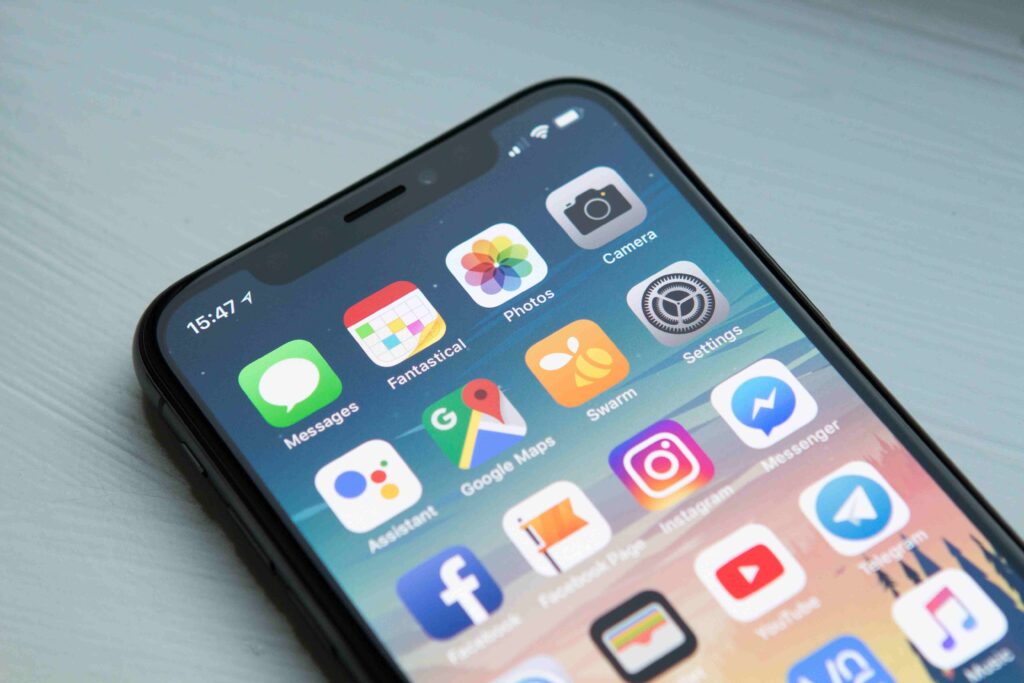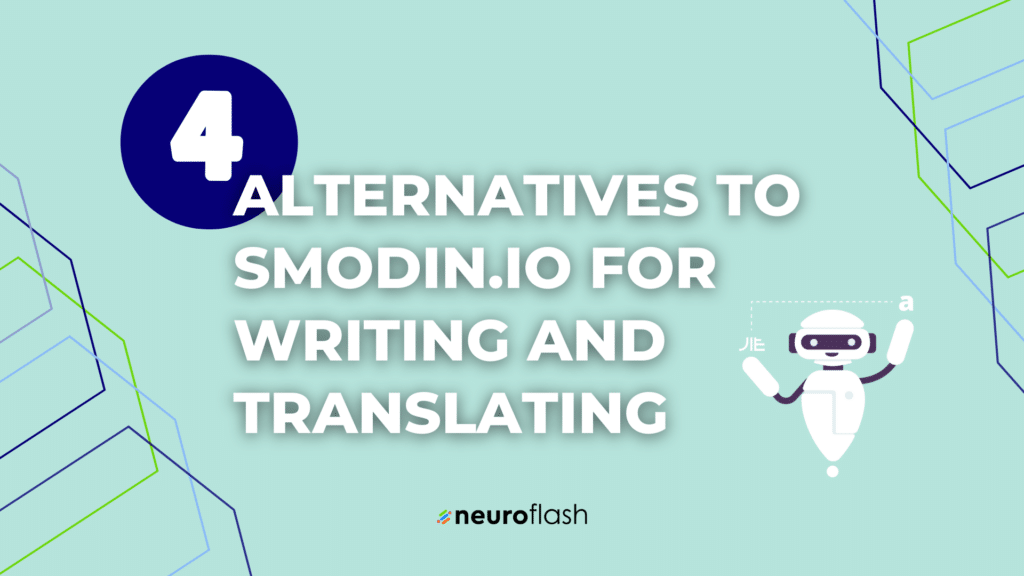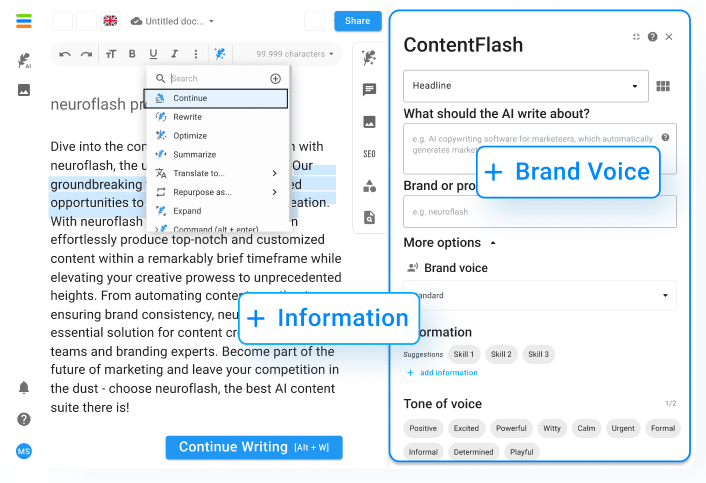You don’t know what a funnel is? No idea about SEO and content? Then you’ve come to the right place! In this blog post you’ll find the ultimate list of digital marketing terms including explanation. So you can have your say in no time when it comes to online marketing.
Search engine marketing
Search engine marketing, commonly known as SEM, is the umbrella term for all activities aimed at getting a website to rank higher in search engine results (such as Google or Bing).
SEO
SEO refers to the optimization of a website for the search engines. The goal is to appear high in search results to attract more website visitors. This involves on-page factors such as the correct use of keywords and meta optimization, but also off-page factors such as backlinks and social media signals. Good search engine optimization is important, because otherwise a website – no matter how good it is – could go completely unnoticed.
SEA
SEA is the abbreviation for Search Engine Advertising and refers to the type of advertising in which ads are placed on search engine results pages. The ads can appear on different placements, depending on how much the company pays for the advertising. Payment is usually made per click on the ad (pay-per-click, or PPC for short). Overall, SEA is a very effective way to attract new customers and increase a company’s visibility. Targeting can ensure that ads are seen only by potential prospects.
Backlinks
A backlink is a link from one web page to another. The number of backlinks pointing to a page is a strong indicator of its popularity and directly affects its search engine ranking. The more high-quality websites link to your own content, the better! Backlinks can of course also be generated yourself – for example through guest posts or product reviews.
Bounce rate
Bounce rate is an important metric for website analysis. This is the number of visitors who land on a website and then leave immediately without interacting or seeking further information. The causes of a high bounce rate can be many – from poor navigation to untrustworthy content to poor user experience design. Technical errors such as long loading times or browser problems can also cause users to leave the page again immediately.
Keywords
A keyword is a word or phrase used by users in search engines (such as Google) to find information about a particular topic. Using the right keywords can help make content more discoverable and visible.
Landing Page
A landing page is a web page that a visitor “lands” on when they arrive at the page via a link. The landing page should be developed specifically for this visitor and lead him to the destination as quickly and easily as possible (e.g. for conversion).
Meta tag
A meta tag is a word or phrase embedded in the code of a web page to provide information about the document being described. The tags are read by the browser, but not displayed. Usually, a meta tag is placed in the header of an HTML page. Search engines use meta tags when indexing web pages and can also display them as search results.
Off-page
Off-page SEO refers to all aspects of SEO that do not take place directly on one’s website. On the contrary, the off-page strategy focuses on using external websites to improve the visibility and ranking of your own in the search engine results pages (SERPs). This includes actions such as building backlinks, sharing social media posts, and creating content for guest authors.
On-page
On-page optimization refers to all actions performed directly on the website to improve search and thus increase visibility in search results. This includes meta tag optimization, title tag optimization, backlink building and much more.
Page Visits
Page Visits is the number of visits a website receives. The number of page visits can be an indicator of the popularity of a website.
Pay per click (PPC)
With pay-per-click, also known as PPC, advertisers pay for every click on their ads.
Ranking
“Ranking” describes the position or rating of a web page in a search engine result. The positioning of search results is determined by algorithms based on the content of the page and other factors.
SERP (Search Results)
SERP stands for “Search Engine Results Page” and refers to the page on which the search results of a search engine are displayed. The SERP usually contains ten organic search results and is thus the first page users land on when they search for something.
Title tag
A title tag is an HTML tag that specifies the title of a web page. The title tag is used by search engines to determine the relevance of a page to a particular search term.
Social Media Marketing
Social media marketing is the use of social networks such as Facebook, Twitter and Instagram to promote a business or brand. This involves sharing content that is relevant and interesting to the relevant target group. Sharing opinions and experiences is also an important aspect of social media marketing.
Content marketing
Content marketing is the creation and distribution of content with the goal of attracting and/or retaining customers. The content can be of various types – from blog articles and videos to podcasts or infographics. It is important that they are relevant and interesting for the target group. Because that’s the only way they’ll actually be read, viewed or heard.
Range
Reach is the number of people who see certain content. The higher the reach, the more people can see and interact with content.
Stroytelling
Storytelling is the art of telling stories to promote products and brands. The best stories are emotionally engaging and told in a compelling way that allows the viewer to identify with the protagonist.
Influencer Marketing
Influencer marketing is a form of digital marketing in which companies work with influencers to raise awareness of their brand, products or services. Influencers are people with a large online presence who are able to reach a corresponding number of people and get them excited about a particular topic or brand. Working with influencers can help get the word out about a company faster and more effectively than traditional marketing efforts could.
Email marketing
Email marketing is the use of email for the purpose of marketing or advertising. With email marketing, companies can attract, retain, and inform customers using personalized or non-personalized messages.
Affiliate marketing
Affiliate marketing is a model in which companies advertise products and services via external publishers in return for a commission. The relationship between merchant (company) and affiliate (external publisher) is usually handled by a network that establishes contact with merchants and handles payments.
Display Advertising
Display advertising is a form of online marketing in which companies place ads on websites and in apps to draw attention to their products and services. Display ads are often shown in banner form and can contain text, images, videos or interactive elements.
Ad Click
When someone clicks on an ad, it is also called an Ad Click. This means that the person is interested in the product or service and wants to receive more information. Companies therefore design their ads in such a way that they attract users’ attention and they consequently click on them.
Ad Impression
An ad impression is any playback of an ad on a social network or website. Unlike an Ad Click, an Ad Impression can be an unintentional viewing. This metric is important to determine how often the ad was actually seen and by whom.
Click-through rate (CTR)
The click-through rate (CTR) measures the ratio of clicks on an ad to the impressions that ad generated. CTR is particularly valuable for measuring the impact of online advertising and helps companies assess the effectiveness of their campaigns.
Cost-per-action (CPA)
Cost-per-action, also known as cost-per-acquisition, is a pricing model for online advertising in which the advertiser only pays for the placement of an ad when a specific action has been taken by the user. This action can be, for example, a purchase, registration or download.
Cost-per-impression (CPI)
Cost-per-impression (CPM) is a pricing model for online advertising in which the ad operator is charged according to the impressions displayed. Billing is based on cost per thousand impressions (CPM), which is why this model is also known as cost per thousand. CPM is considered the standard pricing model for billing display advertising and often competes with so-called pay per click (PPC).
Cost-per-lead (CPL)
Cost-per-lead (CPL) is a digital marketing metric that indicates how much it costs to acquire a potential customer. CPL is calculated by dividing the total cost of a campaign by the number of new customers acquired.
If you need a little break from reading, you can also watch the following videos and listen in a relaxed way:
More Digital Marketing Terms:
A/B test
A test in which two or more versions of a website or online offering are contrasted to determine which version produces the best results.
Brand Awareness
Brand awareness refers to the perception and recognition of a brand. The higher the brand awareness, the more people know the brand and associate it with a particular image or product. Brand awareness is therefore closely linked to brand recognition. A successful marketing campaign can lead to an increase in brand awareness and more people noticing or remembering the brand.
Call-to-action
A call-to-action (CTA) is a call to action included on a web page or in an advertisement. CTAs should be clear and concise, telling users exactly what to do. Examples of CTAs are: “Click here”, “Sign up now” or “Buy now”.
Clickbait
Clickbait is a term that usually has a negative connotation and refers to content that only serves to generate clicks. Often, this content is exaggerated or misleading and offers no real added value to the reader.
Conversion rate
Conversion rate is a metric that indicates how many visitors to a website are converted to leads or customers. Conversions refer to specific target actions that website visitors are expected to take, such as filling out a contact form or buying a product from your online store.
Cookie
A cookie is a small piece of text that is stored on your computer by a website. Cookies are used to recognize users and track the use of a website.
Customer Journey
The customer journey refers to the series of steps a customer takes while buying a product or service. This includes searching for the product or service, comparing options, deciding on a purchase, and the post-purchase experience. The customer journey can take place online or offline.
Customer Relationship Management (CRM)
CRM stands for Customer Relationship Management and refers to the method by which a company maintains its customer relationships. It is used in many industries, including the construction industry, as a Construction CRM allows companies to effectively manage their interactions with clients, streamline processes, and enhance overall project efficiency. The digital marketing industry has expanded the concept of CRM to use it for maintaining relationships with potential customers (prospects) as well as interacting with other prospects in the marketplace.
Earned Media
In the digital marketing world, “earned media” is the term for all articles, reviews, mentions and opinions about companies or products written by a second party – without the latter having directly intervened in the content. The impact of earned media can be powerful: a positive review can potentially lead customers to buy a product; a negative review can dissuade them.
Emotional value
Emotional value is the idea that a company or brand offers more than just the benefits of its products or services. It is also about the feelings and emotions that people associate with the company or brand. For example, a children’s toy brand might also have emotional value because it gives children hope or teaches them how to make friends.
Funnel
A funnel, in the context of digital marketing, is a series of steps that a customer or potential customer goes through when engaging with a company and its products or services. The term “funnel” comes from the fact that the number of people going through each step usually decreases.
The first phase of the funnel is awareness: In this phase, the customer is made aware of the company and its products or services.
The second phase is interest: In this phase, the customer perceives more about the company and its products or services and possibly starts to be interested in them.
The third phase is the action: In this phase, the customer decides whether to contact the company, buy a product or use a service.
Leads
Leads are contacts you have gained through your marketing efforts. This includes, for example, website visitors who have signed up for a newsletter or downloaded a free eBook. Once a potential customer has come into contact with your brand and expressed interest, they are a lead.
Multi-channel
Multi-channel refers to the use of multiple channels to engage with the target audience. These channels can be online (e.g. website, email) or offline (e.g. TV, radio, print).
Owned Media
Owned media refers to all content that a brand produces and controls itself. These include, for example, websites, blogs, podcasts, email newsletters, etc. The advantages of owned media are that it is relatively inexpensive, can achieve a high reach, and can completely control the brand.
Paid Media
Paid Media is a collective term for all actions you take to advertise your website or business on external websites or platforms. These can be display ads, Google Ads or Facebook Ads. Paid Media is opposite to Owned Media and Earned Media.
Retargeting
Retargeting is the targeted re-reach of customers who have already come into contact with your brand but have not yet converted. This technique is often referred to as remarketing.
Touchpoints
Touchpoints are all moments when a customer comes into contact with your brand. These can be physical touchpoints, such as when they hold one of your products in their hand or walk past one of your storefronts. But digital touchpoints are also part of it, like when he clicks on an ad or visits your company profile.
Traffic
Traffic refers to the number of visitors to a website or online store. Traffic can of course be increased through advertising, for example Google Ads. Organic searches in search engines like Google also lead to more traffic on a page. So high traffic does not necessarily equate to high sales or conversions.
Web 2.0
Web 2.0 refers to the second generation of the World Wide Web, which is based on interactive and collaborative websites. The concept of Web 2.0 emerged in the mid-1990s with the emergence of the World Wide Web as a public sphere and then spread from 2000 onwards with the first web applications such as blogs, wikis and social networks.
If these digital marketing terms aren’t enough for you, here’s a glossary of even more relevant terms.
If, on the other hand, you would like to learn more about the basics of digital marketing and delve deeper into the tasks of a digital marketing manager, you can read on here.
Frequently asked questions & answers
What is digital marketing?
Digital marketing is the marketing of products or services via digital channels.
What are the types of digital marketing?
The most common types of digital marketing are search engine marketing, social media marketing, content marketing and affiliate marketing.
What is a digital marketing goal?
A digital marketing goal is a goal you want to achieve with your digital marketing strategy. Examples of digital marketing goals include increasing website traffic, increasing conversion rates, or generating more leads.
Useful tips
-
SEO: Search engine optimization is an essential part of digital marketing. It involves optimizing your website and content for the search engines to ensure that your site appears high in search results.
-
Social Media Marketing:
Using social media such as Facebook, Twitter, and LinkedIn to connect with your target audience and inform them about your business and products or services. -
Content Marketing:
An important part of digital marketing is creating quality content that is relevant to your target audience and gets them to take notice of your website or business. -
Affiliate marketing: The use of partners or affiliates to offer products or services. These receive a commission for each buyer they refer to the company.
-
Email marketing:
A direct form of marketing in which you send emails to your customers or prospects to notify them of news, offers, or other information.
In summary, there are a lot of terms to know in the digital marketing world. However, this list is by no means complete and new terms will be added all the time. But with the digital marketing terms listed here, you should be off to a good start.



























